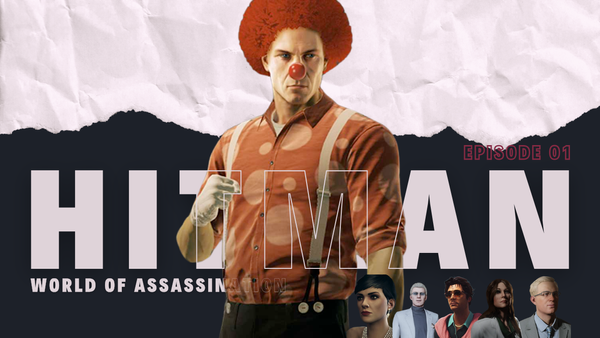Black Spot | Zone Blanche & Twin Peaks: A (Purely Speculative) Play on Intertextuality

How the French crime/horror drama series gleefully subverts key moments & concepts from the 90s cult show as it flirts with the genre and parallels.
Warning: contains major spoilers for Season 1, minor spoilers for Season 2, of Black Spot; as well as for Twin Peaks.
1. The new district attorney, Siriani arriving in town — tall trees, fog, grey skies. For a moment, it could be déjà vu. It's could be Agent Cooper's arrival in Twin Peaks. But where Coop's first appearance and entrance into that small Washington town, extended and filmed from the passenger seat, was by far the most peaceful of his experience, the DA's car stops without warning before we ever meet him. He has to get out. He has no reception, but there is a telephone pole just down the road, vandalised. A thing fallen out of time, just like so much in Twin Peaks — like so much in Villefranche; like the town entry sign that is as quaint as can be.
There is no chatting away to Diane, however, no discussion of majestic Douglas firs (yet). Instead, wildlife turns on Siriani rather immediately: he is stung by a bee and has to drag himself back to his car to use his epipen. It is thus that the moment is first broken, but that sense of intertextuality, of communication, remains. His many allergies, as he lists them later, are a quirk of his personality as integral and cause for teasing from the townsfolk as Coop's many cheerful idiosyncracies, albeit not nearly as clearly text, nor as crucial to the actual solving of crimes.
But then, he is not the protagonist of the series: that is Major Laurène Weiss, chief of police.
There is something out there, in those woods. Something dark. Something that seems by turns threatening and protective — of those who abide by its rules.
In Villefranche, the woods are ever-present, looming, and they are a part of every one of its residents' lives — they are a rite of passage, too.
2. The Night Watch is a dare, a ritual between the teens of Villefranche — a night spent out in the woods, to prove their courage and become adults in the face of whispers in the dark, an encroaching presence. There is plenty of evidence that something devouring is out there, even though it is only glimpsed in shadows and reflections. The Night Watch is a sacred institution to some, a reckless stunt to others.
In Twin Peaks, the Bookhouse Boys protect the town in secret; in Zone Blanche, the Children of Arduinna are hackers/eco-terrorists who are collecting evidence against the Steiner family, whose wealth and influence encompasses the entire town. Les Enfants draw heavily from Celtic myth, using imagery and hierarchy to organise themselves. They are a force against some kind of evil. The Bookhouse boys work against organised crime, drugs ferried across the border from Canada. Les Enfants fight the Steiner family, capitalism and pollution — the mayor would call them a public menace.
Whatever is in those woods, it will kill again.
"The Woods have provided for us," one character proclaims in defence of the forest and the Night Watch; but they are reminded by another that they have not lost a child to those woods. (Which, we learn in Season 2, may not be entirely true.)
The children that die in the woods, are buried in the woods. I'm not sure Villefranche has an actual cemetery. Perhaps everyone is simply buried where they fell.
In Twin Peaks, the teenagers lead strange, double lives, embroiled in drugs, murder, and general dubiousness. In Villefranche, there are no dead girls wrapped in plastic, but kids trapped in the woods and kept for sport. None of the parents seem to really ask their kids where they're gonna be; or where they've been, for that matter. Unless someone turns up dead.
Everyone knows something, and no-one says anything.
3. As in every town with secrets to spare, there is a family that owns and rules all. In the first episode, the old sawmill is shut down — a sawmill much like the Packards' in Twin Peaks. Another parallel turned on its head: the Steiner family divests itself of the mill, that relic of the past very early on; but only to be able to close a deal to build a new, modern project on all that land that they're trying to buy from the council. It's turning out as hollow as Ghostwood, especially as Bertrand checks out of reality for a good long time after his daughter's murder is solved. There is certainly enough dirty laundry to be aired, as Laurène and Cora discover that Marion Steiner, Bertrand's daughter, was working against her family, helping The Children of Arduinna, to sabotage the project; and was murdered for it by a police officer on Marion's grandfather's pay roll.
The Steiner family is no Family Horne, yet their daughter fulfills both the role of Audrey and Laura Palmer. And, certainly, the Steiners helped protect the systemic abuse of girls and young women. Steiner is briefly one of the main suspects in his own daughter's murder — in Twin Peaks, Ben Horne is a suspect, but it turns out Leland Palmer, possessed by BOB, murdered his own child.
There is no BOB in Villefranche, but there is evil out in those woods.
Everything is tied to that forest, including her own disappearance when she was a teenager. There is no Black and White Lodge hidden deep inside; but a Sanctuary, and every case leads Laurène back to it. She herself is at the heart of these mysteries, as she knows more than she reveals to any of the other characters. Everyone knows she keeps dark secrets, but (almost) everyone knows better than to press her for them. It puts her at odds with Siriani plenty of times.
The crows are what killed the rooster, and there are no owls in Villefranche. Yet the crows, too, are not what they seem.
The bar may not be as atmospherically sinister as the Roadhouse, but it's out in the middle of nowhere in the way that everything in Villefranche is; and at least once there is live music to the tune of the characters' hearts, when there's not a brawl, too.
4. Much unlike Twin Peaks, Black Spot never quite goes full supernatural. Whereas in Twin Peaks, and especially in the prequel movie Fire Walk With Me, continued in the Revival, there are plenty of phenomena that are beyond this world. In Black Spot, (almost) everything will eventually be explained — all except for Laurène's connection with the forest and its supposed Celtic god, Cernunnos. There are things that are strange and — seemingly — out of this world, but there is still cause and effect. There are rules. There are demons and creatures in Twin Peaks, and cosmic forces that determine the way of the world, those who fight for good and those who fight for evil. Both shows stay away from Christian models of monotheism and search for different influences instead.
Laurène has a connection to the woods in the way that Cooper has to the universe. Marion's killer is haunted by the crows that show Laurène and Cora the way to solve her murder. Sabine knows things in the way Sarah Palmer had visions, before and after her daughter's murder.
It is in this way that Zone Blanche can be interpreted to communicate with key moments and places from Twin Peaks — an exercise in intertextuality that is not necessary to understand in order to




